French Periods: Influence and Interior Design Styles
1/234
There's no tags or description
Looks like no tags are added yet.
Name | Mastery | Learn | Test | Matching | Spaced |
|---|
No study sessions yet.
235 Terms
Louis XII
Known for famous artists during his reign.
Francis I
Reigned from 1515 to 1547; marked a new beginning of Renaissance art in France.
Henry II
Reigned from 1547 to 1559; married Catherine de Medici.
Catherine de Medici
A woman of cruel and forceful character who controlled Henry II and their three sons.
Charles IX
Son of Catherine and Henry II.
Henry IV
Reigned from 1589 to 1610; enemy of fanaticism and friend of people.
Louis XIII
Son of Henry IV; ruled as a child under regency of Marie de Medici.
Cardinal Richelieu
Virtual ruler of France from 1622 to 1642; great patron of the arts.
Louis XIV
Established France as the cultural center of Europe; ruled with magnificence.
Le Roy Soleil
Nickname for Louis XIV, lover of pomp and splendor.
Louis XV
Grandson of Louis XIV; inherited the crown at 5 years old.
Louis XVI
Inheritor of a nation stripped of its American colonies.
Arras Tapestry
Type of tapestry used in Renaissance interiors.
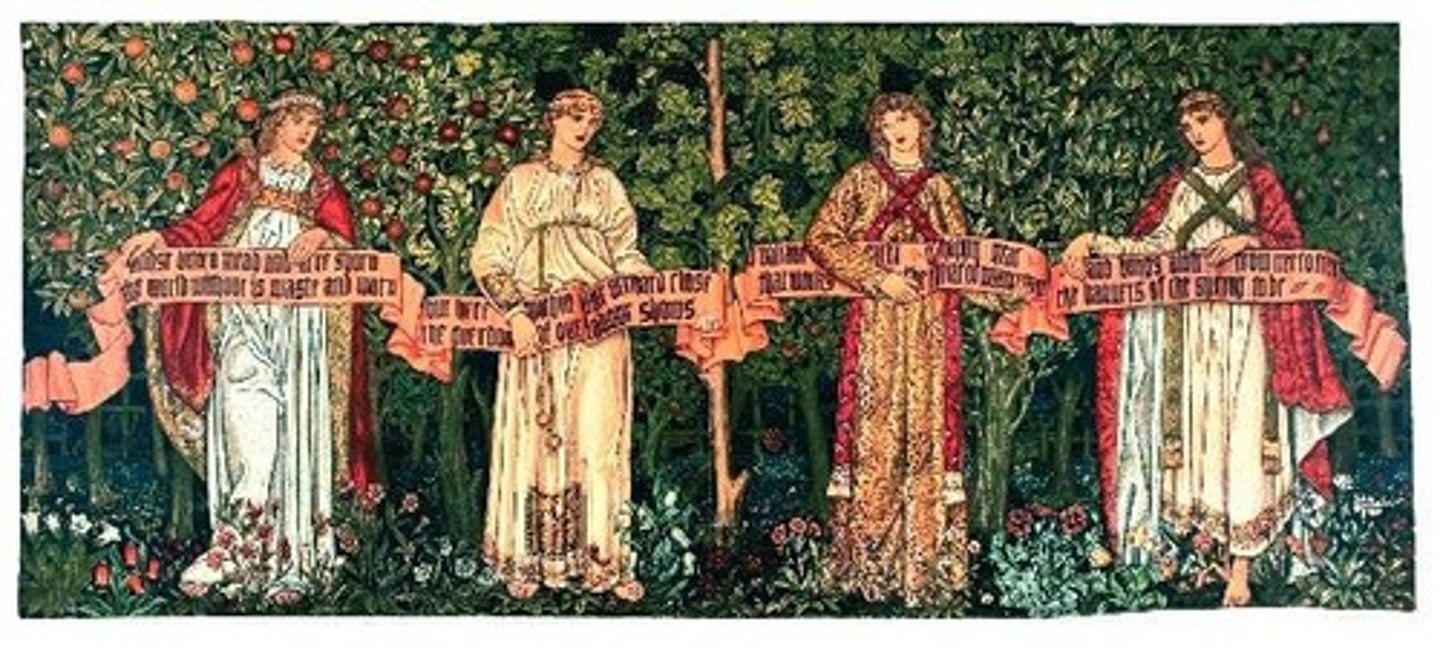
Cordovan leather
Material used in the decoration of rooms during the Renaissance.
Gothic paneling
Style of paneling used in Renaissance interiors.
Overmantel
Frequently supported by columns or pilasters, inspired by classic detail.
Arabesque
A decorative design element used in Renaissance interiors.
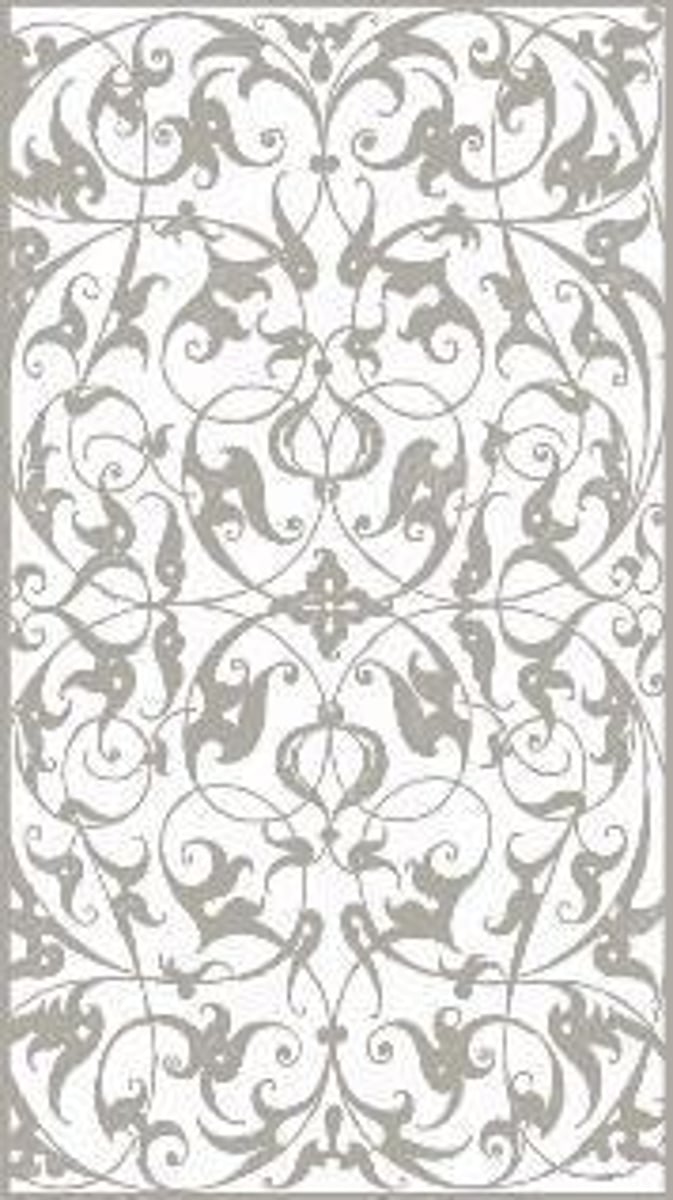
Candelabra
A type of candle holder used in Renaissance decoration.
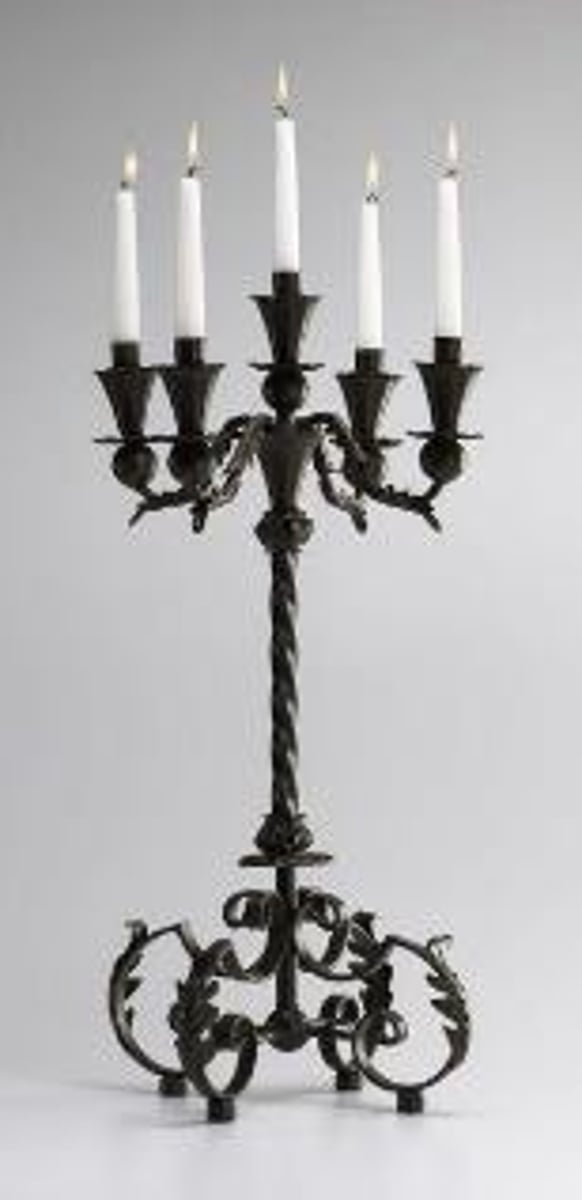
Vitruvian forms
Architectural designs based on the principles of Vitruvius, reflecting symmetry and proportion.
Ornamental motifs
Decorative elements borrowed from Italian styles, including arabesque and candelabra.
Gothic pointed arches
Architectural features characterized by a pointed arch shape, commonly used in Gothic architecture.
Coffered ceiling/panel
A ceiling with recessed panels, often used for decorative purposes.
Crescent symbol
A symbol adopted by Henry II, representing a new artistic expression in France.
Baroque patterns
Elaborate decorative designs that emerged in the late Renaissance, often characterized by bold forms and intricate details.
Parquet wood patterns
Flooring made from wooden pieces arranged in a geometric pattern.
Escabelle
A small chair similar to the Italian Sgabello, used in the middle of the 16th century.
Caquetoire
A small conversational chair standing on four legs, first used during the middle of the 16th century.
Armoire
A double cabinet enriched with classical architectural motifs.
Gadrooning
An ornamental motif characterized by a series of convex curves or flutes.
Trestle supports
Support structures for heavy tables, often featuring carved designs.
Bun Feet
Short, rounded feet used on furniture, often seen in Flemish designs.
Flemish Feet
Furniture feet characterized by scroll-like designs, commonly used in Flemish furniture.
Flat stretchers
Support beams arranged in an 'X' shape to stabilize table and cabinet legs.
Contrasting colors
The use of different colored woods in furniture design for decorative effect.
Cordovan Leather
A type of leather known for its durability and rich texture, often used in upholstery.
Henry IV and Louis XIII
French monarchs during whose reigns Flemish influence became prominent in furniture design.
Hugues Samblin
A leading designer of furniture during the latter years of the 16th century.
Jacques du Cerceau
A prominent furniture designer known for his contributions in the late 16th century.
Elaborately embossed
A decorative technique involving raised designs on leather or fabric.
Wall paneling
Decorative wooden panels used to cover walls, often featuring intricate carvings.
Domino wallpaper
Wallpaper with patterns that resemble marble effects, likely imported from Italy.
Nicolas Fouquet
Minister of Finance under Louis XIV, jailed for life due to suspected irregularities.
Versailles
A palace conceived by Louis XIV to be unmatched in size and beauty.
10,000 persons.
Capacity of Versailles
Galeries des Glaces
The great Hall of Mirrors in the Palace of Versailles, designed by Mansart and decorated by Lebrun.
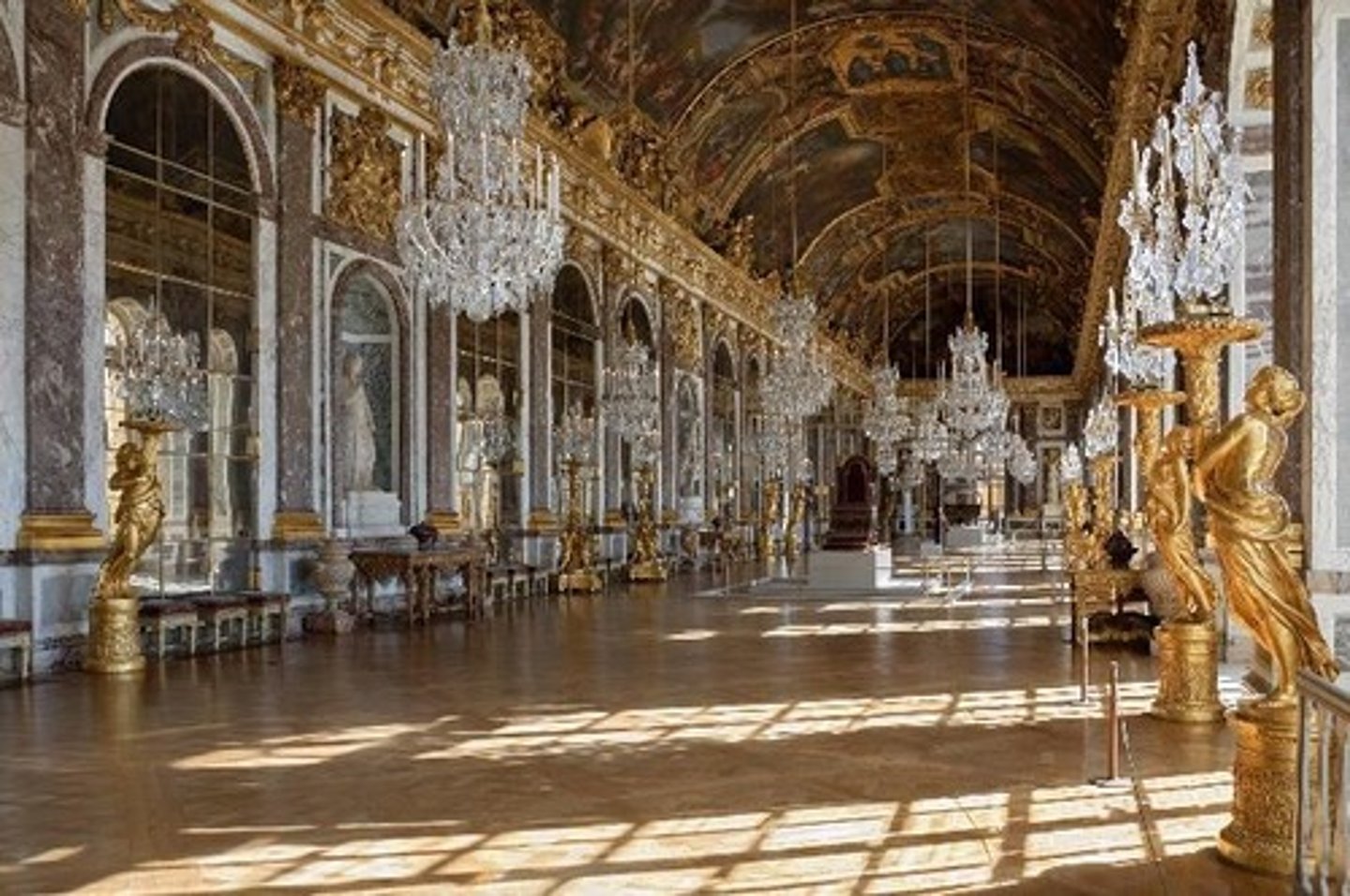
240ft long, 34ft wide, and 43ft high.
Dimensions of Hall of Mirrors
Lebrun
Ceiling of Hall of Mirrors painted by
French Baroque
A style characterized by great formality of design and extravagance.
Public rooms in Versailles
Designed for entertaining vast assemblages in a regal manner.
Salons
Walls, ceilings, doors, and furniture were regarded as secondary motifs.
Decorative treatment of walls and ceilings
Treated as one magnificent composition of paintings, carvings, tapestries, and mirrors.
Stone and colored marble
Materials used in formal public rooms
Wood paneling in formal apartments
More generally used, with pilasters rising from the floor or on a pedestal.
semicircular or segmental curve.
Shape of wood panels
Boiserie
A French term for carved wood paneling of the French 18th century.
Door and window trim
Architecturally treated with heavy moulding, crowned with a cornice.
cherubs.
Overdoors decoration. Frequently enriched with wooden sculpture in high relief showing
Mantels in Versailles
Enormous size, made of colored marble, sumptuously carved.
Over mantels
Framed in an architectural treatment with mirror or painted mirror panels.
oak parquet patterns or black and white marble squares.
Flooring in Versailles
Savonnerie pile rugs
Floor coverings
Ceiling coves
Elaborately enriched by plaster panels and painted ornaments.
Ornamental motifs in French Baroque
Alternated between abstract and realistic motifs, including flowers, leaves, and religious symbols.
Kings monogram
Two intertwining 'L' in script form, often placed in a cartouche located over the door or window or in the center of a panel.
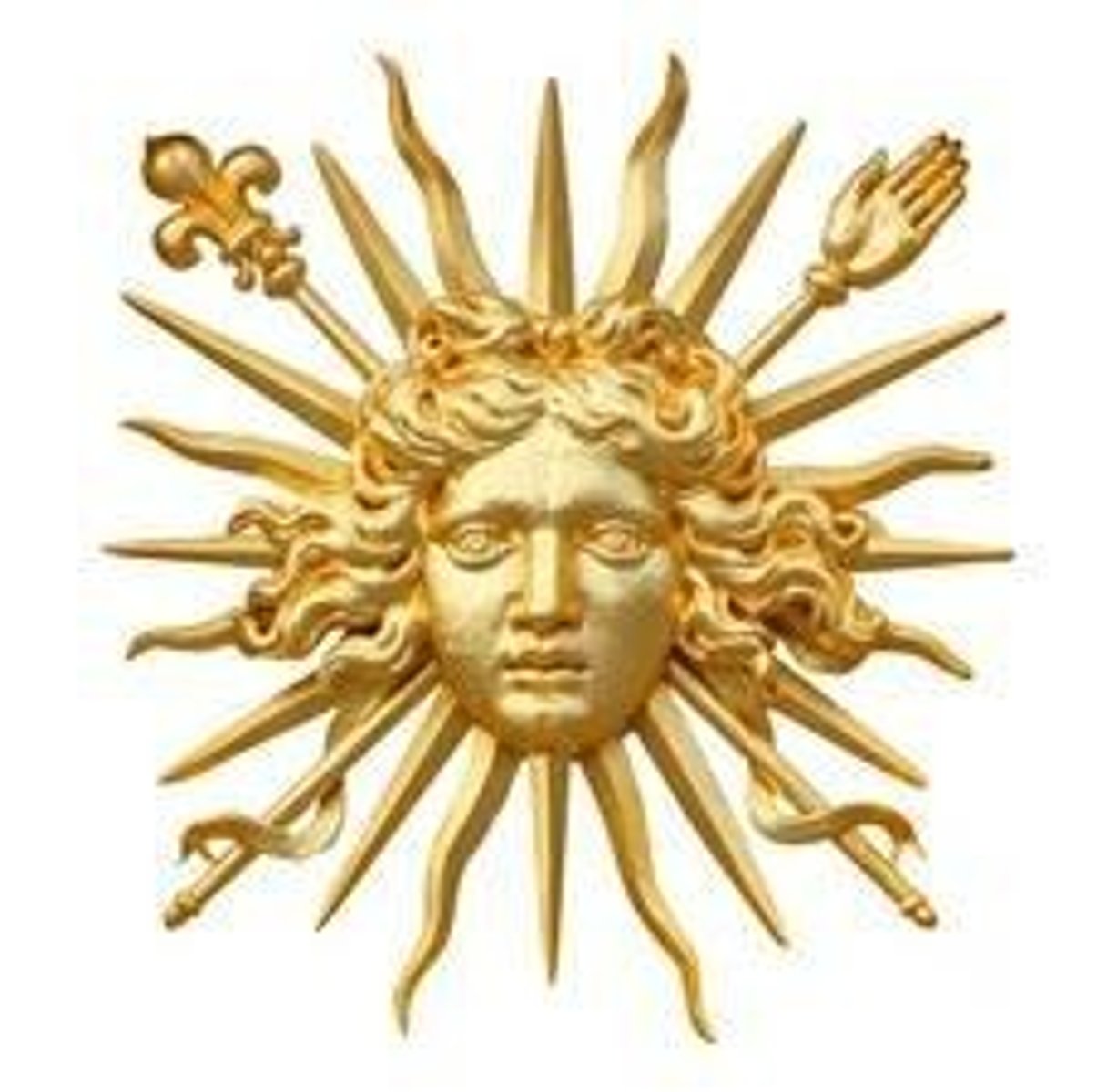
Kings symbol
A sun with spreading rays, frequently used.
Furniture of the Baroque Period
The furniture industry in France was very well organized as early as the 16th century, with individual pieces usually made upon order until the period of Louis XV.
Huchiers-menuisiers
The earliest furniture makers known as hutch carpenters.
Menuisiers d'assemblage
Makers of solid wooden furniture.
Menuisiers de placage et de maquetrie
Makers of veneers and marquetry.
Ebineste
The term for cabinetmaker that became common about the middle of the 18th century.
Maître-ebineste
Title given to those who had served their apprenticeship, passed the required tests, and received a royal license to practice their trade.
Typical legs
Heavy, square and tapered, braced by square sectioned, diagonal stretchers.
Wood carving
Popular in furniture making, with many pieces being gilded.
Boulle Ormolu
Gilded bronze motifs and mouldings used as applied ornament, which also served to brace the structure of the furniture.
Boulle work
Panels decorated with marquetry patterns made from sheets of tortoiseshell and German silver, brass, or pewter.
Ebony, oak, walnut, chestnut, sycamore
Wood types
Tabletops
Typically made of marble.
Upholstered chairs and sofas
Made with upholstery materials consisting of tapestry, needlepoint, leather, cane, and heavy silk.
Textiles
Damasks and plain or brocaded velvets used for upholstery.
Upholstery trimmings
Elaborate hand-woven fringes or gold or silver nailheads.
Draperies
Made from the same textiles used for upholstery.
Regency style
Describes transitional forms seen as early as the closing years of the 17th century, maintaining the scale and richness of Louis XIV treatments while beginning to show gracefulness and curvilinear elements.
Transitional form
Applied to both wall paneling and furniture during the Regency period.
Rococo style
Commonly known as Louis XV, it is characterized by interior decorative application rather than architectural.
rocaille and coquille
Origin of Rococo
rocaille
referring to rockeries and rustic elements
coquille
cockshell
Rococo human comforts
Paramount in the Rococo style, leading to practical changes such as reduced room sizes and the addition of many rooms for special purposes.
Rococo style
A style characterized by its spatial development originating from France, influenced by Italian elements.
Reception rooms
Rooms designated for receiving guests, differentiated for winter and summer use.
Boudoirs
Private rooms for women, typically used for dressing and personal activities.
Foyers
Entrance halls usually treated with panel designs of marble or Caen stones.
Dado
A lower wall paneling used less frequently in Rococo design compared to previous styles.
Chinoiseries
Decorative designs inspired by Chinese motifs, often featuring mandarins, pagodas, and foliage.
Singeries
Decorative designs featuring monkey motifs, often used in conjunction with chinoiseries.
Vernis-Martin
A type of lacquer developed by the Martin brothers, known for its secret process and application on coromandel wood.
Marquetry
Decorative inlay work made from various woods, including tulipwood and kingwood.
Ormolu mounts
Gold or gilded bronze embellishments used to enrich furniture during the Rococo period.
Colored marble tops
Marble surfaces used on tables and furniture that harmonized with the room's color scheme.